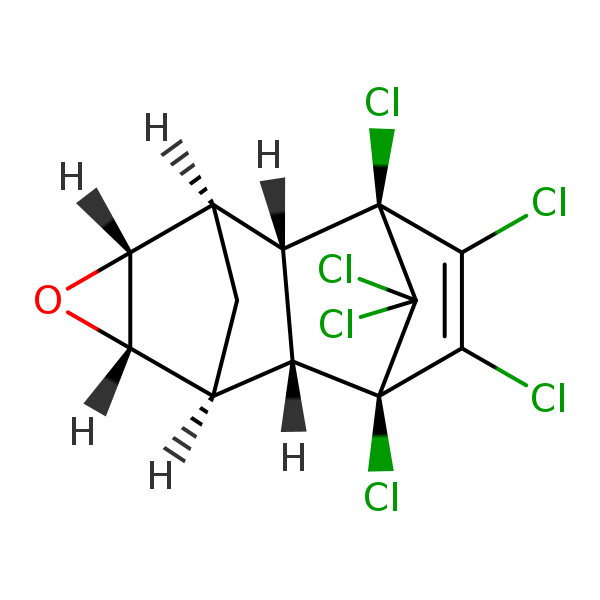Dieldrin
CASRN 60-57-1 | DTXSID9020453
- IRIS Summary (PDF) (18 pp, 135 K)
On this page:
Noncancer Assessment
Reference Dose for Oral Exposure (RfD) (PDF) (18 pp, 135 K) Last Updated: 09/07/1988
| System | RfD (mg/kg-day) | Basis | PoD | Composite UF | Confidence |
|---|---|---|---|---|---|
| Hepatic | 5 x 10 -5 | Liver lesions |
NOAEL
:
5
x 10-3
mg/kg-day |
100 | Medium |
Reference Concentration for Inhalation Exposure (RfC) (PDF) (18 pp, 135 K)
Not assessed under the IRIS Program.
Cancer Assessment
Weight of Evidence for Cancer (PDF)
(18 pp, 135 K)
Last Updated: 09/07/1988
| WOE Characterization | Framework for WOE Characterization |
|---|---|
| B2 (Probable human carcinogen - based on sufficient evidence of carcinogenicity in animals) | Guidelines for Carcinogen Risk Assessment (U.S. EPA, 1986) |
- Dieldrin is carcinogenic in seven strains of mice when administered orally. Dieldrin is structurally related to compounds (aldrin, chlordane, heptachlor, heptachlor epoxide, and chlorendic acid) which produce tumors in rodents.
- This may be a synopsis of the full weight-of-evidence narrative.
Quantitative Estimate of Carcinogenic Risk from Oral Exposure (PDF) (18 pp, 135 K)
Oral Slope Factor:
1.6
x 101
per mg/kg-day
Drinking Water Unit Risk:
4.6
x 10-4
per µg/L
Extrapolation Method: Linearized multistage procedure, extra risk
Tumor site(s): Hepatic
Tumor type(s): Liver carcinoma (Davis (1965), reevaluated by Reuber, 1974 (cited in Epstein, 1975a); Walker et al., 1972; Thorpe and Walker, 1973; NCI, 1978a,b; Tennekes et al., 1981; Meierhenry et al., 1983)
Quantitative Estimate of Carcinogenic Risk from Inhalation Exposure (PDF) (18 pp, 135 K)
Inhalation Unit Risk:
4.6
x 10-3
per µg/m3
Extrapolation Method: Linearized multistage procedure, extra risk
Tumor site(s): Hepatic
Tumor type(s): Liver carcinoma (Davis (1965), reevaluated by Reuber, 1974 (cited in Epstein, 1975a); Walker et al., 1972; Thorpe and Walker, 1973; NCI, 1978a,b; Tennekes et al., 1981; Meierhenry et al., 1983)
Other EPA Information
- Human Health Benchmarks for Pesticides (HHBP). This database provides human health benchmarks for pesticides that may be present in drinking water.
- Office of Pesticide Programs Pesticide Chemical Search. This database provides links to health effects information and registration status for pesticides.
- Chemistry Dashboard. This database provides information on chemical structures, experimental and predicted physicochemical, and toxicity data.
Related Links
Critical Effects
Tumor Sites
Chemical Structure

Synonyms
- Alvit
- Compound 497
- Dieldrex
- Dieldrin
- Dieldrine
- Dieldrite
- ENT 16,225
- Heod
- Hexachloroepoxyoctahydro-endo,exo-dimethanonaphthalene
- Illoxol
- NA 2761
- NCI-C00124
- Octalox
- Panoram D-31
- Quintox
- RCRA Waste Number p037
- 1,4:5,8-Dimethanonaphthalene, 1,2,3,4,10,10-hexachloro-6,7-epoxy-1,4,4a,5,6,7,8,8a-octahydro, endo,exo-
- 3,4,5,6,9,9-hexachloro-1a,2,2a,3,6,6a,7,7a-Octahydro-2,7:3,6-dimethanonaphth(2,3-b)oxirene
- 60-57-1


